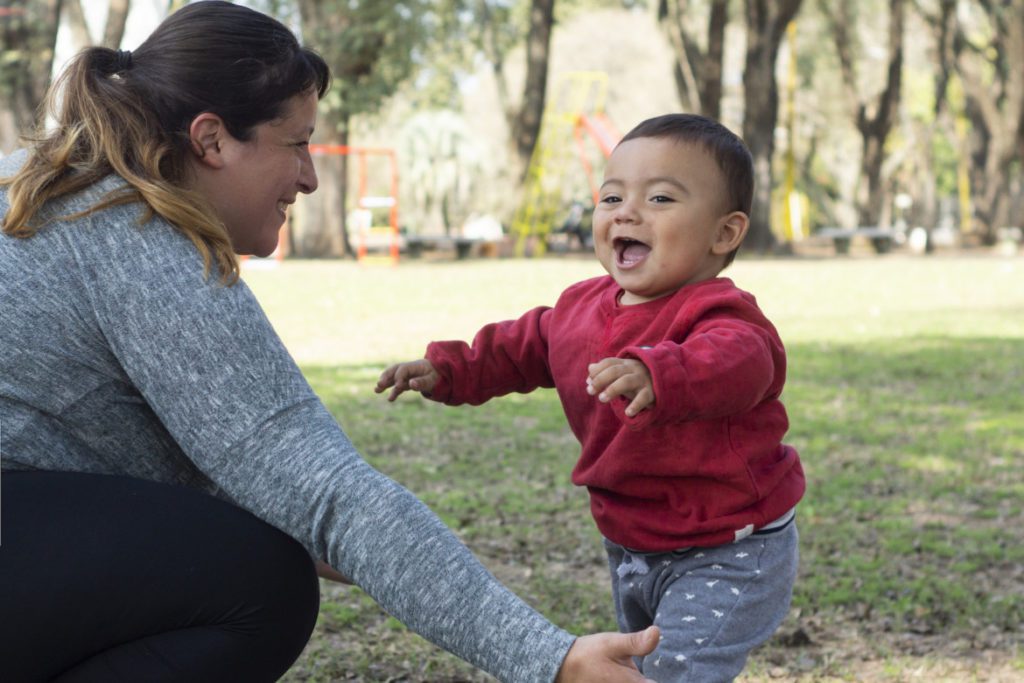Making Good on the Promise of Whole-Child Assessment

The Promise of Whole-Child Assessment
A mother sits on the floor, smiles broadly, and says, “Yes! Yes! Come to Mommy!” as her child takes his first tentative toddles toward her outstretched arms.
A caregiver in an infants’ room purposefully places a brightly colored toy on the floor just out of a child’s reach and watches as she rolls toward it. “Yes!” she says. “You found the toy elephant!”
A preschool teacher observes two children scribbling lines into their math journals, making marks that are uneven and meandering yet flush with meaning, after they’ve counted out the necessary number of ingredients for their cooking project. As she asks them about what they are drawing, she makes a note to include them in an upcoming small-group experience featuring kneading soft dough to strengthen the muscles in their hands and fingers.
When caring adults observe and respond to children’s words and actions, they are performing an essential role in actively supporting child development: they are assessing children’s demonstrations of their current knowledge, skills, and abilities and using those assessments to gently scaffold the children’s next steps.
In education jargon, these adults are engaging in whole-child formative assessment.
Responsiveness is good. Informed responsiveness is better.
In the examples above, you may have noticed that the adults weren’t just observing children’s words and actions—they were responding to them. Caring adults perform these kinds of actions every day, sometimes almost instinctively. We sense the joy and pride of the young child walking toward us, and we can’t help but smile and extend our arms to guide and welcome him.
Responsive teachers use a variety of strategies. They acknowledge and describe what they see children doing. They coach them. They encourage them. They demonstrate aspects of new skills. They provide information to serve as a scaffold for children’s developmental climb.
Each of these instructional strategies is made infinitely more meaningful and effective when grounded in a teacher’s understanding of what a child can currently do.
The more informed we are, the more prepared we are.
Growth and development are multi-faceted, prolonged processes that take root and blossom with varying degrees of consistency and fluidity and at varying rates and times in children’s lives. Sometimes a child’s “next steps” are literal steps, and sometimes they are metaphorical ones. But the essential nature of assessing the most complex skills remains the same as for the simplest ones. We observe, we take note, and we respond.
The more informed we are, both about individual children and about child development in general, the more prepared we are to respond in ways that best support children’s growth and learning.
In the examples above, the adults were responding to an assortment of abilities across all developmental domains. We see similar blending of skills all the time, in everything children do. Math skills cross paths with physical skills, while cognitive skills display as language skills, and literacy skills transform into social–emotional skills. The fact is that even the simplest of human actions and interactions incorporate multiple skills at once, frequently crossing multiple developmental areas.
As adults support one area of development, they are also supporting other areas by the very nature of how human brains and bodies function.
The use of any assessment tool that is limited in scope also, necessarily, limits your understanding of children. Conversely, the use of a whole-child assessment tool—which more closely resembles the way children learn and demonstrate learning—offers you the chance to broaden your view, enrich your understanding, and strengthen your relationship with each child in your class or care.